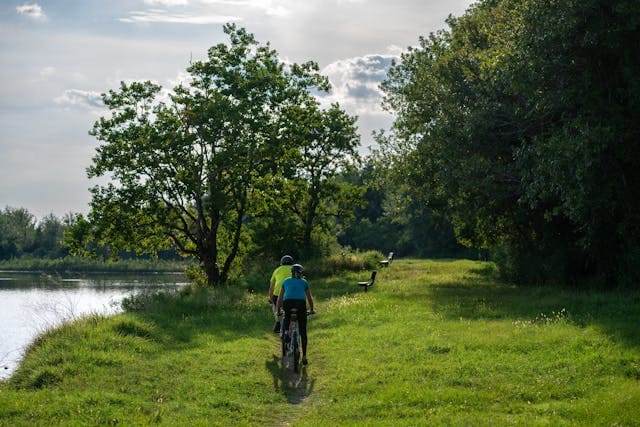In daily cycling, we often suffer from knee joint injuries due to incorrect posture or low seat cushion height. Knees are crucial for cycling enthusiasts, as a healthy knee can protect you from pain. The correct riding method will not damage the knee joint, so maintaining the correct stepping posture and adjusting the seat cushion to suit your height and angle are very helpful in protecting the knee.
Firstly, the most important thing to protect the knee is "prevention": generally speaking, knee joint injuries are mostly caused by damage to tissues such as cartilage and meniscus that are not easily regenerated. These tissues cannot recover or grow quickly like muscles. If you want to promote the recovery of cartilage or meniscus, you can take appropriate amounts of Glucosamine Sulfate, but it should not be taken in too much.
Tissues like cartilage and meniscus are considered non renewable for several years or even longer, so doing targeted muscle exercises can be helpful for the rehabilitation and maintenance of knee joint tissues. However, many people who love cycling and often carry large luggage bags suffer from knee problems due to high-intensity cycling, heavy loads, and incorrect riding posture, ultimately leading to the root of their illness. How can we protect our fragile knees during long-distance cycling? Please read the following four pieces of advice carefully.

1. Maintain the correct riding posture
If high pedaling frequency is used, the force on the knee will be reduced during each pedaling, effectively protecting the knee joint. Some friends rely on their good physical strength and try their best to pedal when climbing to show faster speed. However, the strength of the knee joint is limited, and it is not surprising that long-term high-intensity pedaling can cause damage to the knee joint. So, people with severe knee joint damage are generally those with better physical strength.
2. Adjust the seat cushion to the appropriate height
The more your knees bend while riding a bicycle, the greater the pressure. However, for the sake of safety, most people adjust the seat of their bike very low so that they can support themselves with their feet in case of problems. However, the low riding posture directly causes huge pressure on the knees. It can be said that if this riding posture is always maintained, knee joint problems will soon occur. The correct seat cushion height is: when you ride a bike and press the pedal to the bottom with your leg, your leg is almost straight, but there is still a slight bend for easy rotation.
3. When stepping, the knee should move vertically on a horizontal plane
The movement of the knee is not simply a flat movement like a hinge, but a slight rotation within a certain range of motion. For example, when riding a bike, you can pay attention to your knee bones. If they move vertically up and down without shaking back and forth, the pressure on the knee is minimal. However, if your knee bones move in an 8-shaped or S-shaped shape (when viewed from the side), it may cause knee injuries.
4. Do more leg muscle exercises
Exercising soft and strong muscles requires doing more leg muscle exercises and minimizing the knee's weight-bearing capacity as much as possible. To prevent sports injuries to the knee joint, you can set aside three to four days a week for stretching and weight training, which can effectively exercise the quadriceps (front thigh) and biceps (back thigh) muscles. If the thigh is strong, the knee will also be stronger and less prone to injury.
Consciously strengthen the exercise of the quadriceps and cruciate ligament, enhance the strength of the inner quadriceps and thigh muscles (such as weight-bearing squats), and combine methods such as muscle stretching, walking, horse riding, or wall hugging exercises to pave the way for smooth movement of the patella in the femoral groove.
Muscles are like rubber bands, if they are very elastic, they won't break no matter how you pull them; If it is stiff, it may break with just one pull. The higher the temperature, the softer the muscles will be, making them more susceptible to being stretched. Therefore, when cycling, it is important to keep warm, otherwise the cold air will make the muscles stiff, which can easily cause injury. In daily life, we can rub the lower edge of the knee with both hands and fingers to promote the maintenance of the knee with "lubricant".

Climbing also puts a significant load on the knees
We must double our efforts to prevent such problems from happening when cycling. If permanent damage is caused to the knee due to incorrect riding habits or posture, we will regret it. Therefore, to avoid such problems, please remember the above four pieces of advice.









